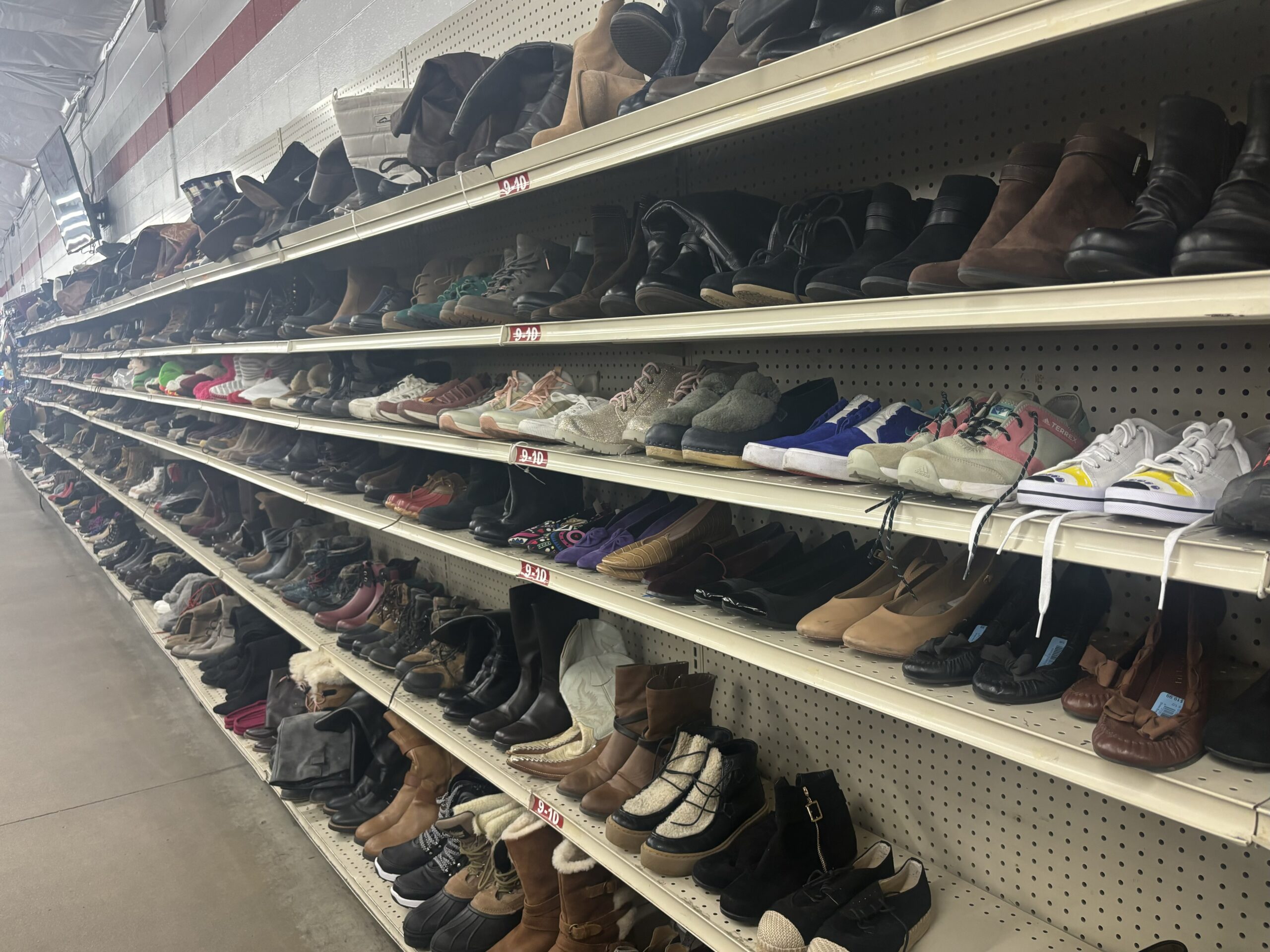The normalization of overconsumption leads to many excess donations in thrift stores. [Photo by Lauren Schmidt]
By Lauren Schmidt
While many of us may know and love brands like Zara, H&M, and Shein, shopping at these retailers could be doing more harm to the planet than good to our closets, according to findings by the UN Environment Programme.
The fashion industry is now responsible for 10% of the world’s carbon emissions, more than the combined impact of both international flights and maritime shipping annually. While it offers a cheap and convenient way to fill closets and stay on trend, fast fashion is responsible for the overwhelming majority of the emissions created.
With micro-trends seeing increasingly shorter lifespans, culture around fashion has shifted to encourage constant purchasing in order to remain stylish. This normalization of overconsumption, or purchasing excess beyond what is needed, is therefore largely to blame when it comes to clothes for the swelling in industry emissions.

Thrift stores often have large sales to cycle through excess donations. [Photo by Lauren Schmidt]
“We have simply grown used to having more clothes than we can really possibly ever wear,” explains Dr. Helen Hazen, an associate professor at the University of Denver focused on sustainability.
But it’s not just our purchasing that’s leading to devastating environmental consequences; Hazen expands that many clothes “go straight from manufacturing to landfill because they’re cheap to produce and so overproduction is common.”
In recent years, many fast fashion brands have made efforts to reverse this image, coming out with ‘sustainable’ collections alongside their regular slew of mass-produced merchandise. However, fears arise that these attempts at rebranding may not amount to more than greenwashing.
Anna Neumann, a member of the DU Center for Sustainability, explains that “a lot of these companies are trying to make themselves look better…while still upholding their traditional practices.”
While much of the damage from these practices come from the production of polyester for cheap materials, Hazen warns that natural materials can be similarly damaging: “they have a huge impact in terms of using fertilizers and pesticides, cotton is particularly notorious (for this).”
Government legislation may be the only solution that sees clothing manufacturers restructure their practices to consider demand before production and their product life cycles, since Neumann infers that “these brands know they’ll lose money if they sign initiatives or take a stance…they see money over people and money over the environment.”
Initiatives such as Pay Up 2020, a campaign intended to repay garment workers for clothing orders that were fulfilled yet cancelled due to the Covid-19 pandemic, provide hope that the issue of fast fashion is moving up the governmental agenda.
However, until we see large scale legislation to address the problem, much of the responsibility falls on the consumer to change their habits. Hazen suggests that we “go back to the model where we value clothes more.”

Repeats of similar clothing items often get dumped at thrift stores once a micro-trend cycles through. [Photo by Lauren Schmidt]
Even shopping secondhand can have limited impact until purchasing habits as a whole are reduced.
“A lot of the clothes we see in thrift stores are then sent overseas just to end up in landfills there,” clarifies Neumann.
“A lot of the clothes we see in thrift stores are then sent overseas just to end up in landfills there,”
says Neumann.
By any means, the best course of action to reduce individual contributions is to begin considering what’s bought new versus secondhand, the lifespan of the clothes in our closets, and how quickly a micro-trend will fade.











Responses
Very informative article, Lauren. It’s so widely concerning how popular fast fashion has become, especially with the big-name brands you listed. I also often think about how terrible it is with a lot of athletic brands, and yet people don’t always talk about that. I hope to see more sustainability content from y’all soon and please keep sharing this important information with everyone!
Tia,
Nice job on this reply to Lauren’s post on fast fashion. It’s thorough and reflective. I agree: I’d like to see more sustainability, too, in clothing production/consumption!